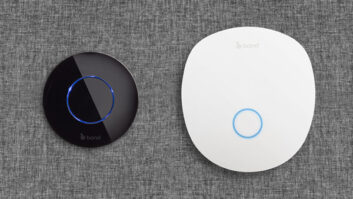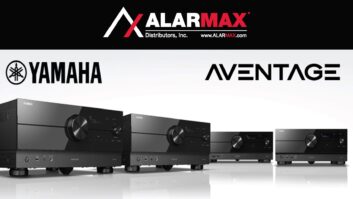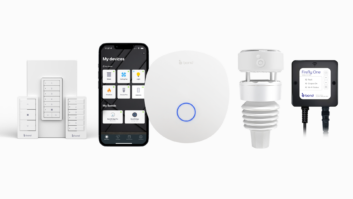Irvine, Calif. — Smarthome is offering the industry’s first home-automation equipment built around the company’s Insteon no-new-wires mesh-network technology, which combines powerline and 900MHz-wireless technologies.
The initial products controls home lighting and small appliances. Future products will control HVAC, security and motorized shades and drapes.
Two-way Insteon technology is promoted as improving reliability, extending range and reducing costs compared to other two-way powerline- and wireless-network technologies. Unlike other powerline technologies, it’s compatible with existing X-10 powerline-network devices.
The company launched sales on its Web site, targeted lighting-specialty retailers, and began selling through its distributor base, which includes one national distributor, Ingram Micro. Ingram’s IT-industry dealers are entering the home-automation market, CEO Joe Dada said.
Smarthome also signed a deal with a major retailer to offer a less expensive line designed for big-box stores, said Dada. Later this year, he added, select Fortune 500 companies will offer Insteon-equipped devices under their own name.
By the end of 2006, Dada predicted, 10 million Insteon devices will be installed in homes.
The first products, available in mid-May from Smarthome, include a tabletop push-button controller and a plug-in lamp-dimming module, both of which plug into existing electrical outlets to send and receive commands over a homes electrical wiring. A plug-in range-extending signal repeater transmits commands simultaneously over powerlines and 900MHz wireless.
A package of devices, available on Smarthome’s Web site at a suggested $129 retail and everyday $99, consists of the tabletop controller, two lamp modules and two repeaters. Additional lamp modules and controllers are $29 each. The controller, which also fits into a double-gang wall box, transmits over five channels, each channel capable of controlling 417 devices.
The package delivers control throughout a 5,000-square-foot house, Dada said, through a combination of mesh-network technology, powerline/RF repeaters, sensitive receivers and automatic retries.
In July, Smarthome will follow up with wired in-wall dimmer/light switches at a suggested $69 each. They will control lamp modules in the room and in turn be controlled from tabletop controllers in other rooms. About a month later, Smarthome will ship a single-gang in-wall wired keypad that will control lighting in multiple rooms. It will retail for about $79
In August, Smarthome plans availability of an Insteon-equipped PC-interface module that incorporates USB, serial and Ethernet ports. Users would download lighting-control programs from Smarthome’s Web site, use the PC to customize the program for their house, and store customized programs in the module, which would execute the programs even while the PC is off.
A wireless-RF controller might be available before Christmas, and a touch screen controller will follow at an undetermined time.
In 2006, the company plans Insteon-equipped electrical outlets to eliminate the need for plug-in modules.
To promote Insteon adoption by other companies, Smarthome offers an off-the-shelf chip loaded with Insteon’s software. Next year, it will offer an ASIC (application specific integrated circuit) to integrate more components, such as caps and resistors, into the IC, thus reducing the product’s footprint and price. At a targeted cost of less than $1, the Insteon ASIC will be half the cost of ASICs using other no-new-wires network technologies, Dada claimed.
Insteon devices will be less expensive and more robust than the other technologies, Dada added, in part because wireless RF is used only in repeaters, not in every device in the network. Insteon’s low 1.2Kbps data rate, he added, reduces the amount of processing power and power consumption compared to wireless technologies such as ZigBee. Insteon’s architecture is also simpler than ZigBee’s, making it unnecessary to incorporate a router in the network to distribute control signals to their intended node, he added. “We broadcast to all nodes simultaneously, and we don’t need to tell a router that a new device has been added to the network,” Dada explained.
The system architecture delivers a high level of reliability even if a lot of signal-attenuating TVs and cellphone chargers are plugged into electrical outlets, Dada said.













